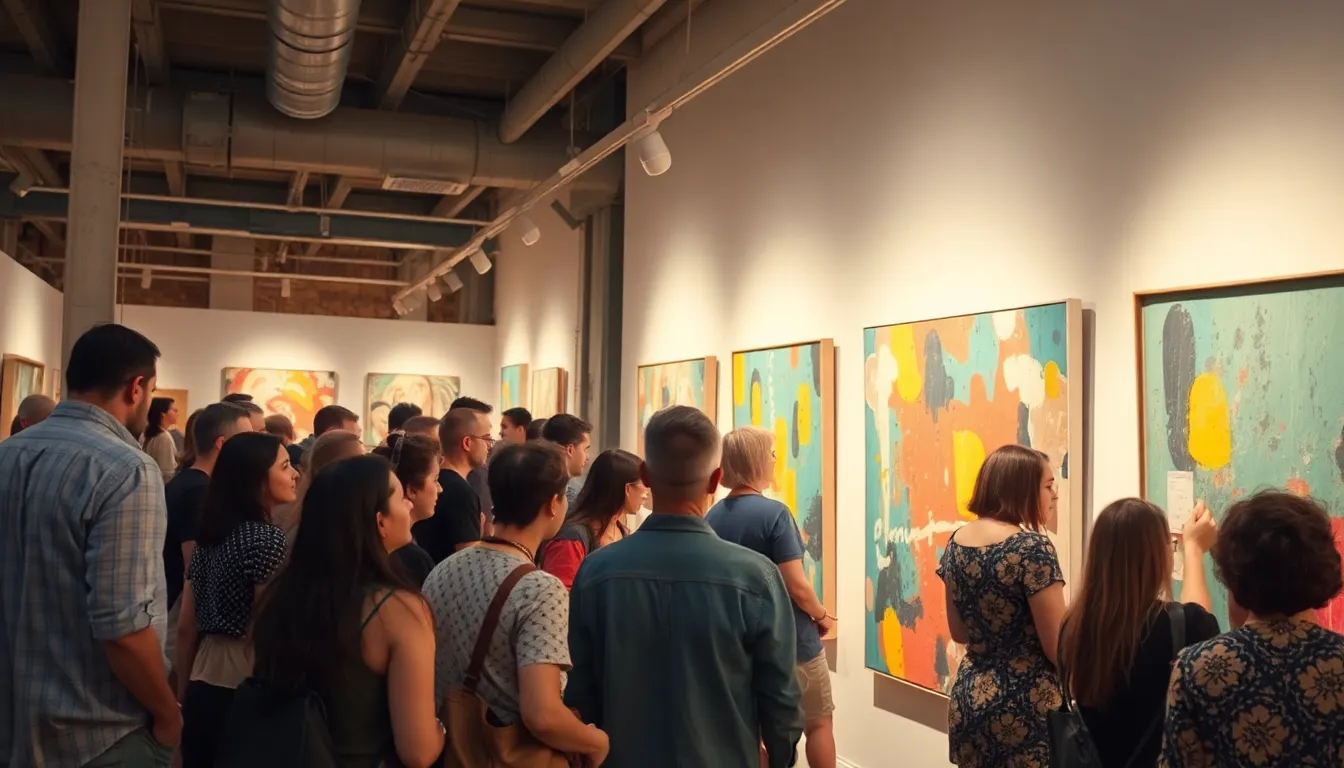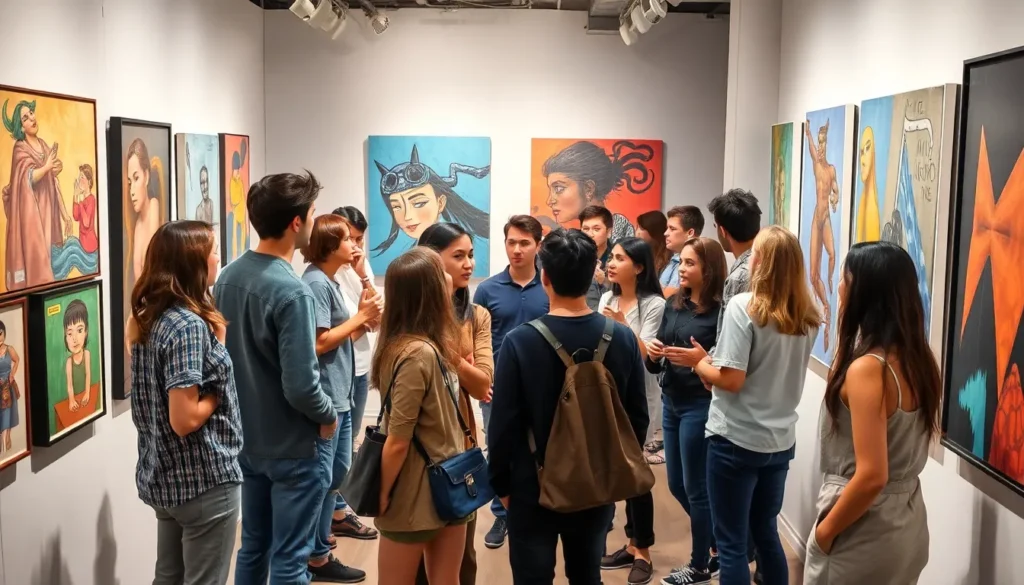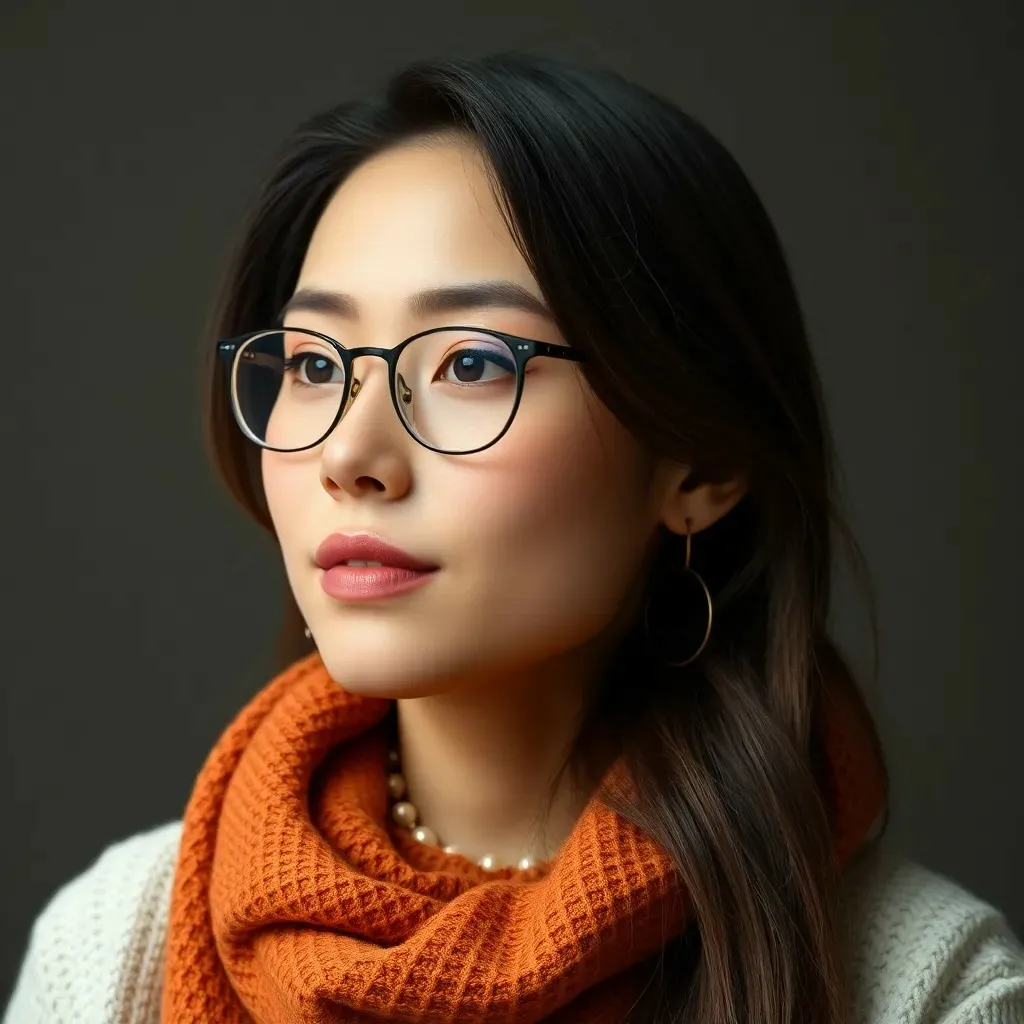In a world where art can sometimes feel as accessible as a secret club with a velvet rope, contemporary art magazines are the golden tickets. They’re not just glossy pages filled with pretty pictures; they’re portals into the minds of innovative artists and the trends shaping today’s creative landscape. Whether you’re an art aficionado or someone who still thinks a canvas should only be for painting walls, these magazines offer a delightful mix of inspiration and insight.
Imagine flipping through pages that spark joy and provoke thought, all while sipping your artisanal coffee. From interviews with boundary-pushing artists to critiques that could make even a potato feel like a masterpiece, contemporary art magazines are essential reading for anyone wanting to stay in the loop. So, grab your favorite issue and prepare to dive into a vibrant world where creativity knows no bounds.
Table of Contents
ToggleOverview of Contemporary Art Magazines
Contemporary art magazines play a vital role in the art ecosystem, offering insights into both established and emerging artists. These publications provide critical commentary on current trends, thus shaping public perception of art. Readers encounter a diverse range of voices that highlight various artistic practices and philosophies.
Interviews within these magazines often reveal the motivations behind an artist’s work, adding depth to the viewer’s understanding. Articles may cover topics from installation to performance art, reflecting the breadth of contemporary creative expression. Trends mentioned in these magazines influence collectors, curators, and even art institutions.
Many contemporary art magazines feature portfolios that showcase specific artists or movements, providing visual stimulation alongside textual analysis. Regular reviews and critiques serve as important resources for evaluating new exhibitions and artworks.
Access to contemporary art magazines fosters a culture of dialogue around art. By engaging with these materials, readers gain exposure to different perspectives that enrich their appreciation for artistic practices.
Collectors and enthusiasts often cite contemporary art magazines as essential references for staying informed. Subscription options to these publications are widely available, making it easy for anyone to engage with the content.
Digital formats also make these resources accessible, allowing for broader distribution and instant access to articles and interviews. By emphasizing the significance of contemporary art, these magazines ensure that art remains a dynamic part of cultural conversations.
Importance of Contemporary Art Magazines


Contemporary art magazines serve essential roles in promoting artistic appreciation and dialogue. They connect a broad audience with the evolving landscape of modern art.
Influence on the Art Community
Contemporary art magazines significantly impact the art community. They foster discussions on evolving artistic trends, which shape public perception. Critical essays guide readers through the complex world of contemporary ideas. By showcasing diverse styles, these publications promote inclusivity within the art world. They act as platforms for debates that challenge common narratives, influencing how art is critiqued and appreciated. Additionally, publications often highlight significant exhibitions, drawing attention to various interpretations of contemporary art. As a result, readers gain a broader understanding of artistic significance.
Platform for Emerging Artists
Emerging artists gain visibility through contemporary art magazines. These publications often feature portfolios dedicated to new talents, spotlighting innovative practices. Regular articles on emerging artists provide readers with insights into their creative processes and inspirations. By highlighting lesser-known voices, magazines enrich the discourse around contemporary art. Interviews with these artists reveal their unique perspectives, fostering connections with audiences. Furthermore, magazines often review exhibitions that display new artists’ work, offering critics a chance to evaluate them. This dedicated focus encourages a vibrant exchange between established and up-and-coming artists.
Key Characteristics of Contemporary Art Magazines
Contemporary art magazines embody unique qualities that set them apart in the artistic landscape. Their influence shapes how audiences engage with modern art movements and artists.
Design and Aesthetics
Creative layouts and striking visuals characterize contemporary art magazines. Each publication often features a balance between text and imagery, enhancing reader engagement. Typography plays a critical role in establishing a magazine’s identity, often reflecting the style of the featured artists. Color palettes also vary, with some magazines opting for bold, vibrant hues while others lean towards minimalist designs. Overall, these aesthetic choices not only attract readers but also elevate the art discussion within their pages.
To showcase multiple artworks, artists and editors frequently use a collage maker or photo collage maker. These tools allow them to creatively combine images, sketches, and photographs into cohesive visual presentations, helping magazines highlight trends, artist portfolios, or exhibition highlights. By incorporating collages, contemporary art magazines can present more dynamic and engaging visual narratives, giving readers an enriched experience of modern artistic practices.
Content and Themes
Diverse topics dominate the content of contemporary art magazines. Often articles cover various art practices, emerging trends, and critical theories, providing a comprehensive view of the contemporary scene. Interviews shed light on artists’ motivations and ideas, fostering connections between them and the audience. Reviews of exhibitions and performances offer insights into new works and thematic developments. Regular features may focus on specific movements or critiques, driving discourse around contemporary art. Rich narratives and analyses ensure that readers receive both informative and thought-provoking content.
Notable Contemporary Art Magazines
Contemporary art magazines showcase significant voices in the art community, providing readers with valuable insights into current practices and trends.
Magazine Profiles
Artforum plays a leading role in shaping critical discourse, featuring in-depth articles and artist spotlights. Frieze highlights contemporary practices, often focusing on international artistic developments and cultural commentary. Art Review delivers a mix of reviews and interviews, offering a platform for both renowned and emerging artists. Hyperallergic stands out for its accessible language and focus on art’s intersection with social issues, making complex topics approachable. Each magazine presents unique content that cultivates an understanding of contemporary art’s nuances.
Comparison of Approaches
Artforum employs a rigorous analytical lens, engaging readers with thorough critiques. In contrast, Frieze emphasizes visual aesthetics, intertwining striking imagery with contemporary narratives. Art Review balances criticism with broad coverage, ensuring both depth and breadth. Hyperallergic takes a more inclusive approach, addressing diverse audiences through easy-to-understand articles. This variety in editorial styles enriches contemporary art discourse, inviting a wider audience to engage with different perspectives.
Challenges Facing Contemporary Art Magazines
Contemporary art magazines encounter several significant challenges in today’s rapidly evolving media landscape. Digital competition demands attention, as online platforms and social media offer instant access to art commentary and visuals. Print magazines grapple with decreasing circulation numbers, leading to budget constraints and cutting back on print runs.
Sustainability proves difficult due to rising production costs. High-quality printing, combined with distribution fees, strains budgets further. This pressure can result in fewer publications or the elimination of less profitable issues.
Audience engagement becomes crucial as readers increasingly seek immediate content. Maintaining relevance requires contemporary art magazines to adapt their strategies and explore innovative formats for storytelling. Engaging content influences readership trends and keeps audiences interested over time.
Market saturation presents another hurdle. Numerous publications flood the market, making it challenging for individual magazines to stand out. Unique editorial voices and distinct design elements become vital in carving out a niche and attracting dedicated readers.
Additionally, dependence on advertising revenue can create conflicts of interest. Art magazines must balance critical independence with the financial support needed to operate. This balance can affect editorial integrity and the credibility of the content presented.
Lastly, retaining emerging talent within the field can prove difficult. Many young artists and writers explore alternative avenues to share their work, seeking platforms that offer them greater exposure. Magazines need to identify and incorporate these voices to maintain their relevance and vibrancy in contemporary art discourse.





